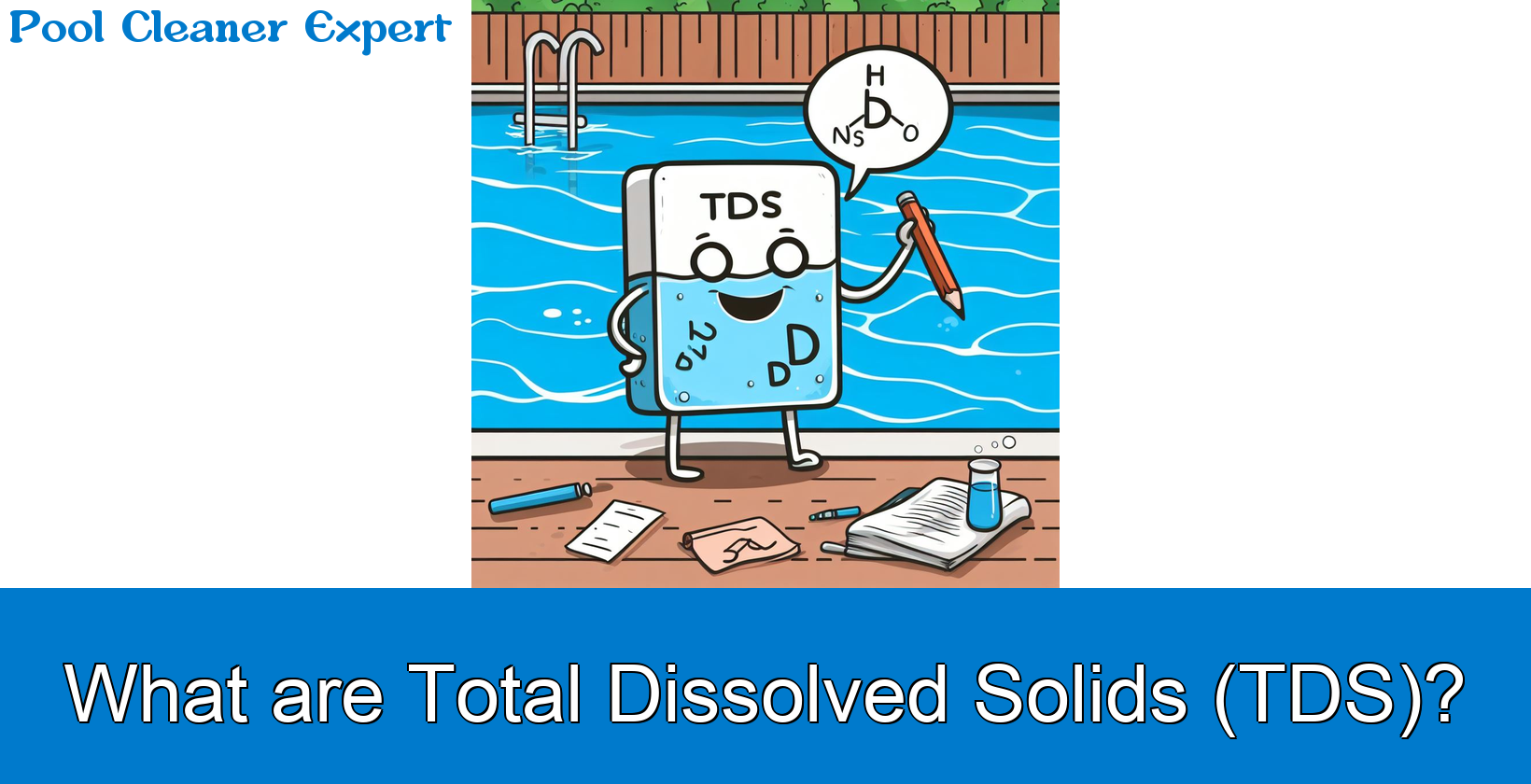Total Dissolved Solids (TDS) refer to the total weight of all soluble matter in the water. This includes everything that has dissolved in the water and remained, such as minerals, cyanurates, chlorides, suntan lotion, dirt, and other substances like hardness, alkalinity, sodium, sulfates, salts. TDS are estimated by measuring the water’s electrical conductivity, which increases with the presence of dissolved charged ions. The lower the water’s conductance, the purer the water. High TDS levels cause issues such as salty tasting water, corrosion, cloudy water, and skin irritation. The accumulation of TDS is inevitable, as it increases with every addition of chemicals or makeup water. Evaporation aggravates this situation, as only pure water evaporates, leaving behind the dissolved substances.
Contents
What other factors increase TDS?
In addition to chemical supplements, evaporation and replacement source water increase TDS. Evaporation removes pure water, leaving behind dissolved solids. The source water used for replacement often contains as much as 400 ppm (mg/L) or more TDS.
What contributes to TDS in pool and spa water?
All matter dissolved in pool and spa water contributes to TDS. This includes salt, bather waste, algicides, metal and stain control chemicals, clarifiers, defoamers, enzymes, windborne debris, and water balance chemicals. Disinfection chemicals, such as sodium hypochlorite, also contribute to TDS, primarily as salt.
How is TDS calculated in a salt pool?
TDS in a salt pool is calculated by first adding the amount of salt, which is typically between 3,000 to 3,500 ppm. After, the increase in TDS is added. This increase in TDS is recommended to be a maximum of 1,500 ppm over the starting or source water TDS. Finally, the starting TDS is added, which typically ranges from 350 to 600 ppm. Adding these components together results in a total TDS ranging from 4,850 to 5,600 ppm.
How does a Salt Water Generator (SWG) affect TDS?
An SWG pool adds 3,000 – 3,400 ppm of salt to the existing TDS, which typically range from 1,000 to 2,500 ppm. This yields a total TDS around 4,000 to 6,000 ppm. In more detail, a Salt Water Generator (SWG) significantly increases the Total Dissolved Solids (TDS) in a pool. The SWG adds between 3,000 and 3,400 parts per million (ppm) of salt to the pool water. This is in addition to the existing TDS in the pool, which typically range from 1,000 to 2,500 ppm. As a result, the total TDS in a pool with an SWG is around 4,000 to 6,000 ppm. This high TDS concentration allows the pool water to conduct electricity well, effectively turning the pool into a low voltage battery.
How are Total Dissolved Solids (TDS) Tested?
Testing for total dissolved solids in a water sample is not simple or inexpensive. Many technicians take a sample to a lab or local pool retailer equipped with electronic equipment to analyze for TDS. However, with the debut of less expensive electronics, TDS meters have become more affordable, thereby becoming a prudent investment for professional water technicians.
Why do TDS test results vary?
TDS test results vary because they are influenced by factors such as temperature, chemical additions, evaporation, and replacement source water. Additionally, the readings vary between different manufacturers of TDS meters. The method of testing, whether it is through an electronic meter or test strips, also affects the results.
What are the Acceptable Levels of TDS?
The acceptable levels of TDS typically range from 1000 ppm to 2000 ppm. The maximum TDS level is 1500 ppm more than the starting level. For pools equipped with Salt Water Generators (SWGs), the maximum permissible TDS level is determined by adding 1500 ppm to the salt level specified by the SWG manufacturer.
What is the impact of high TDS levels on water quality?
High levels of total dissolved solids (TDS) make water appear cloudy and taste bad, often salty. This is common in hot water facilities like spas due to evaporation, heavy usage, and chemical application. High TDS levels cause issues such as salty tasting water, corrosion, cloudy water, and skin irritation. As TDS increases, the risk of galvanic corrosion increases, especially when there are dissimilar metals within the system. High TDS also indicate high organic contamination.
What is Galvanic Corrosion?
Galvanic corrosion occurs when different metals are submerged in an electrolyte solution, such as saltwater, creating a current between the metals. This is a significant issue in normally chlorinated pools only if the Total Dissolved Solids (TDS) are very high.
How does TDS affect galvanic corrosion?
As TDS increases, the risk of galvanic corrosion increases, especially when there are dissimilar metals within the system. Galvanic corrosion is observed by the discoloration of metal parts in the water. It is recommended that TDS not exceed 1,500 ppm (mg/L) above the initial TDS measured during the pool or spa’s start-up.
How do Total Dissolved Solids impact pool water balance?
Total Dissolved Solids (TDS) impact pool water balance by contributing to the overall mineral balance of the water. High TDS levels cause issues such as salty tasting water, corrosion, cloudy water, and skin irritation. They also reduce the effectiveness of disinfectants, leading to bacterial growth. Furthermore, high TDS cause galvanic corrosion, damaging heater elements and causing stains. As TDS and other contaminants increase, it becomes more difficult to maintain the water. These contaminants either inhibit disinfectants or act as nutrients for bacteria or algae, therefore leading to sustained levels of bacteria and other health hazards.
